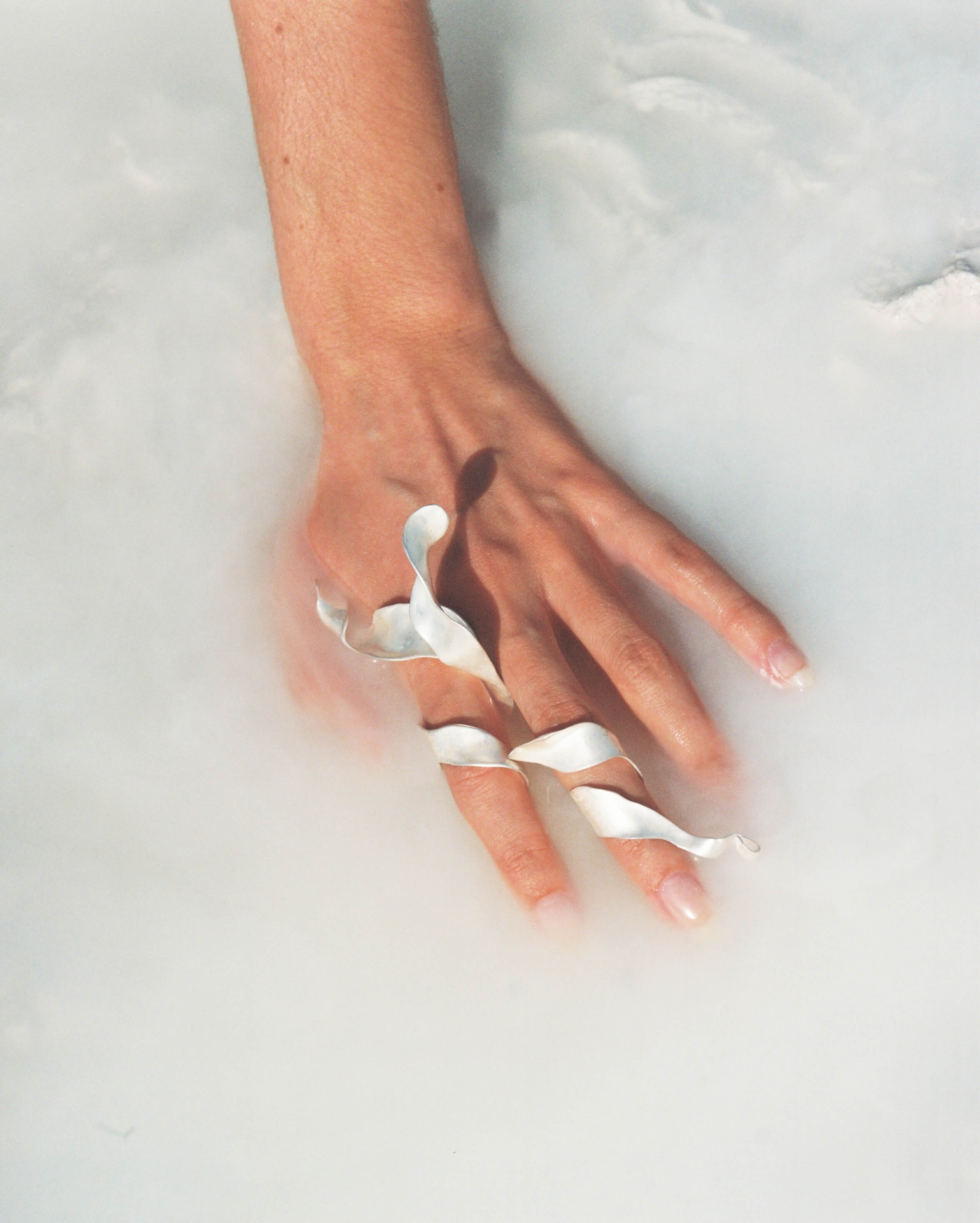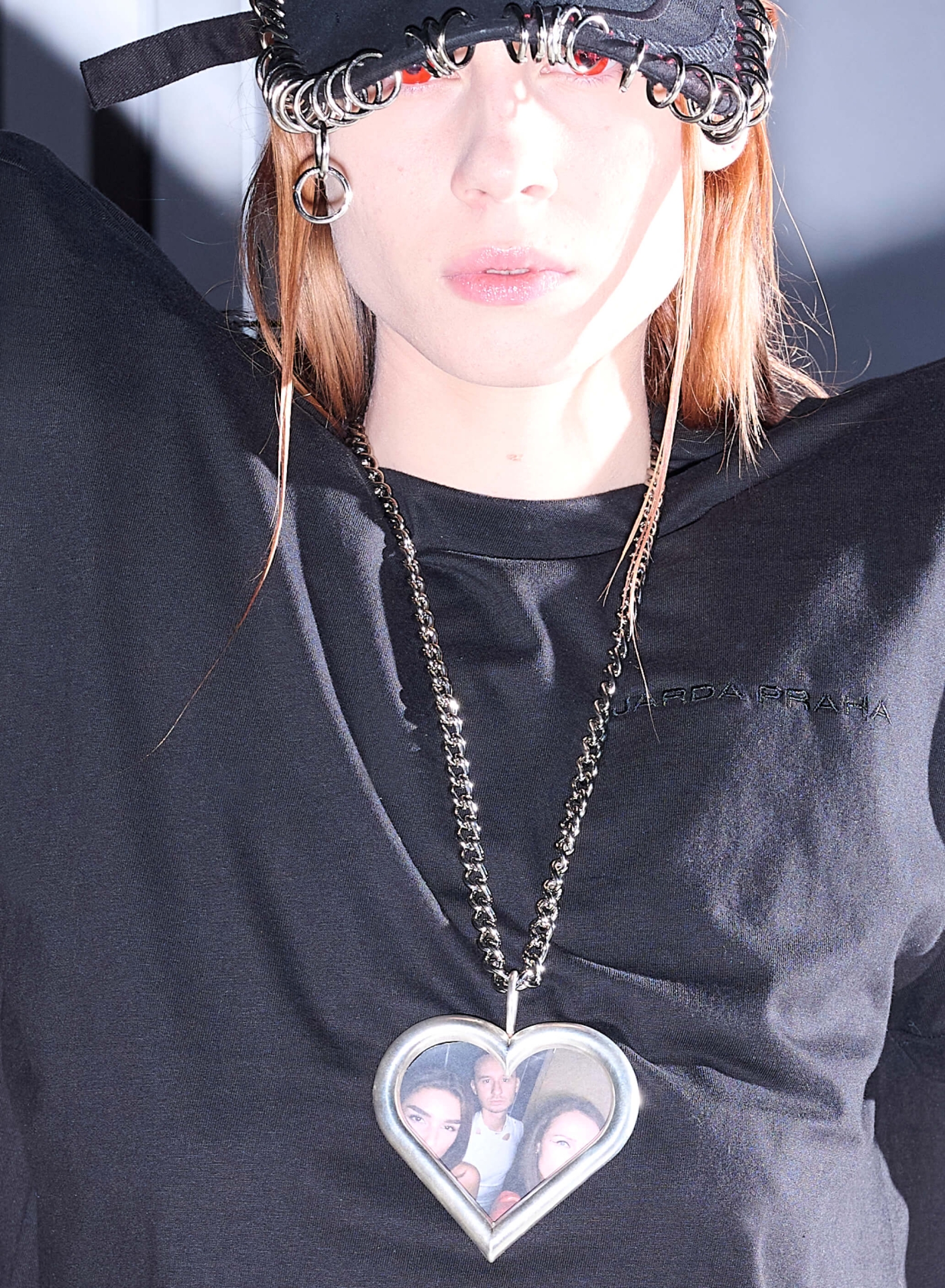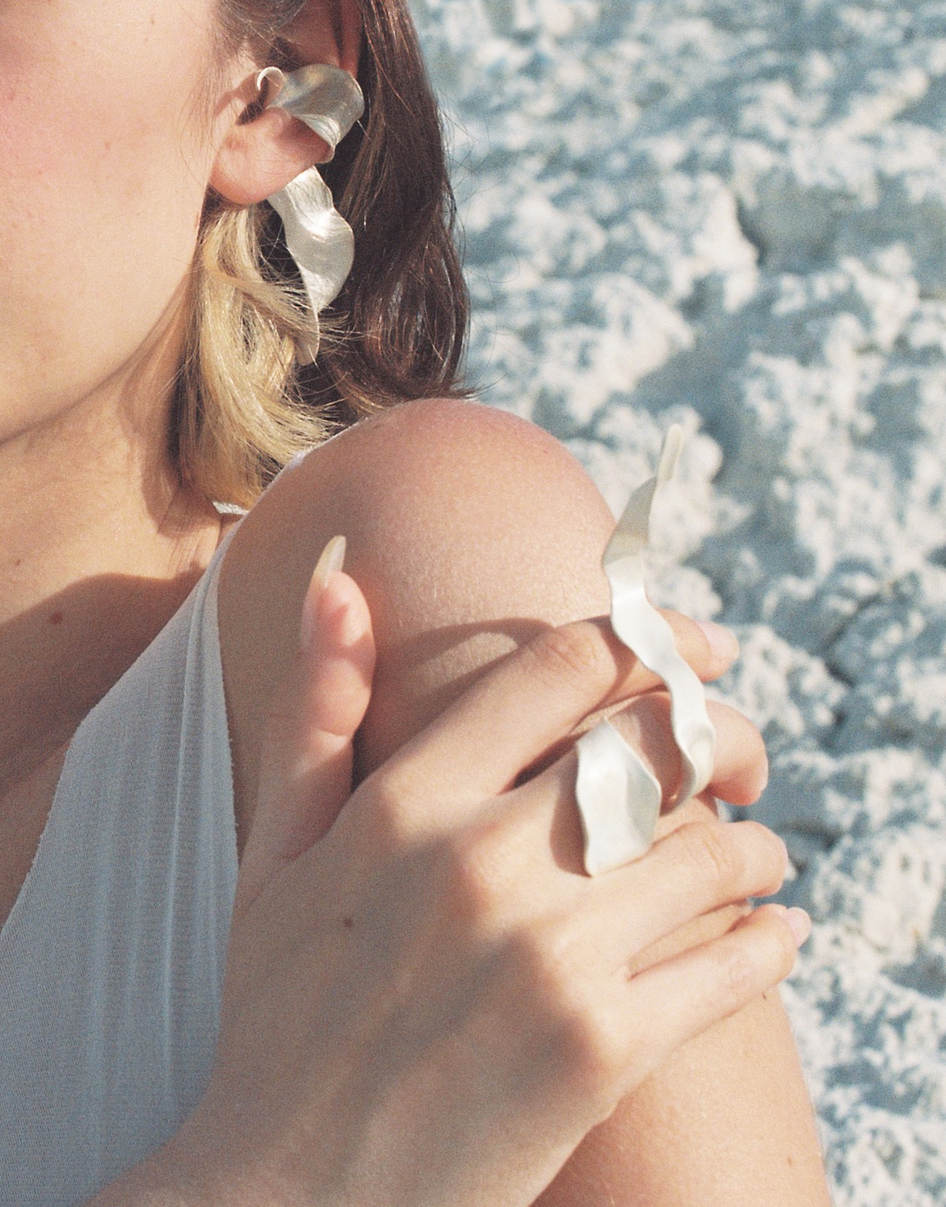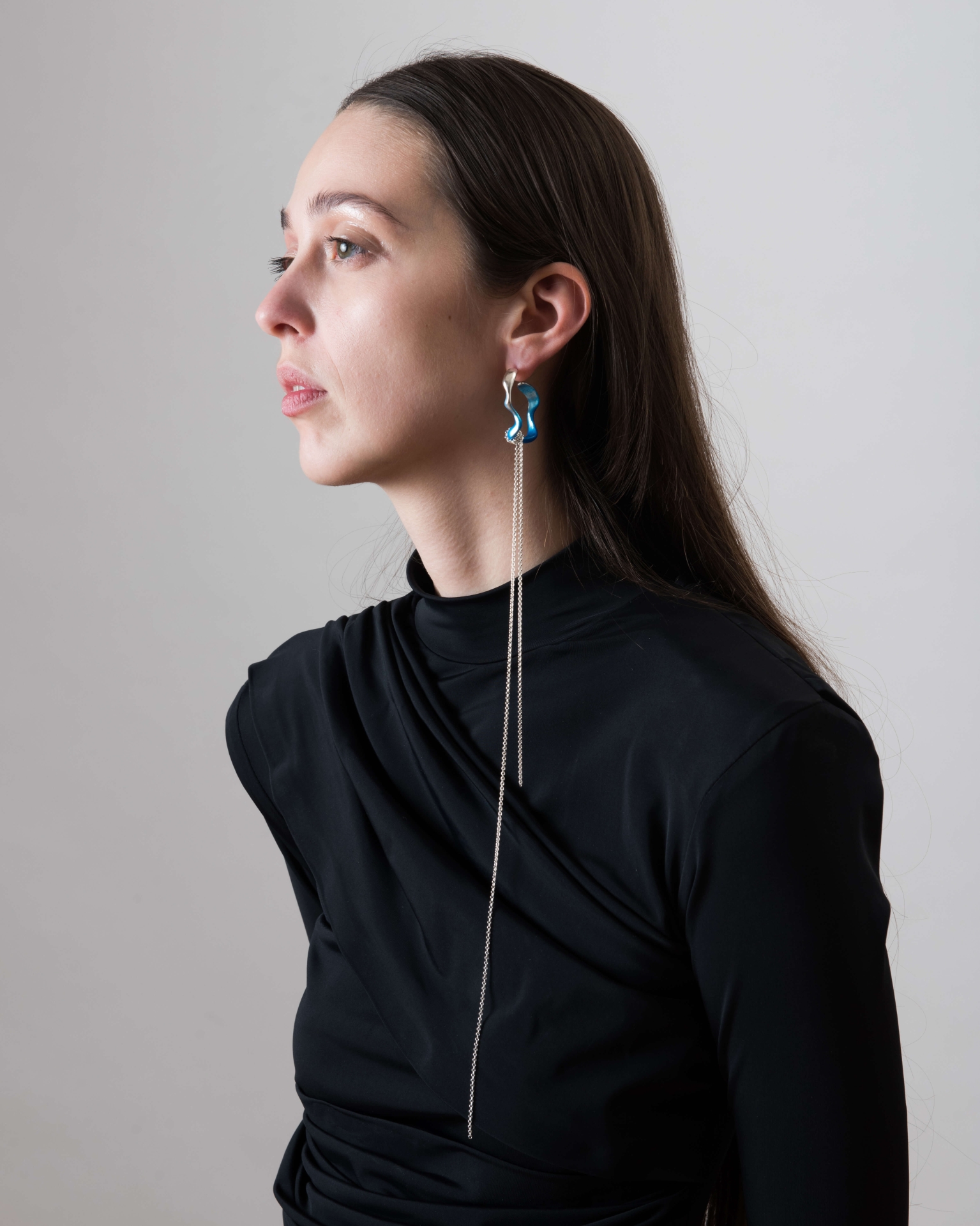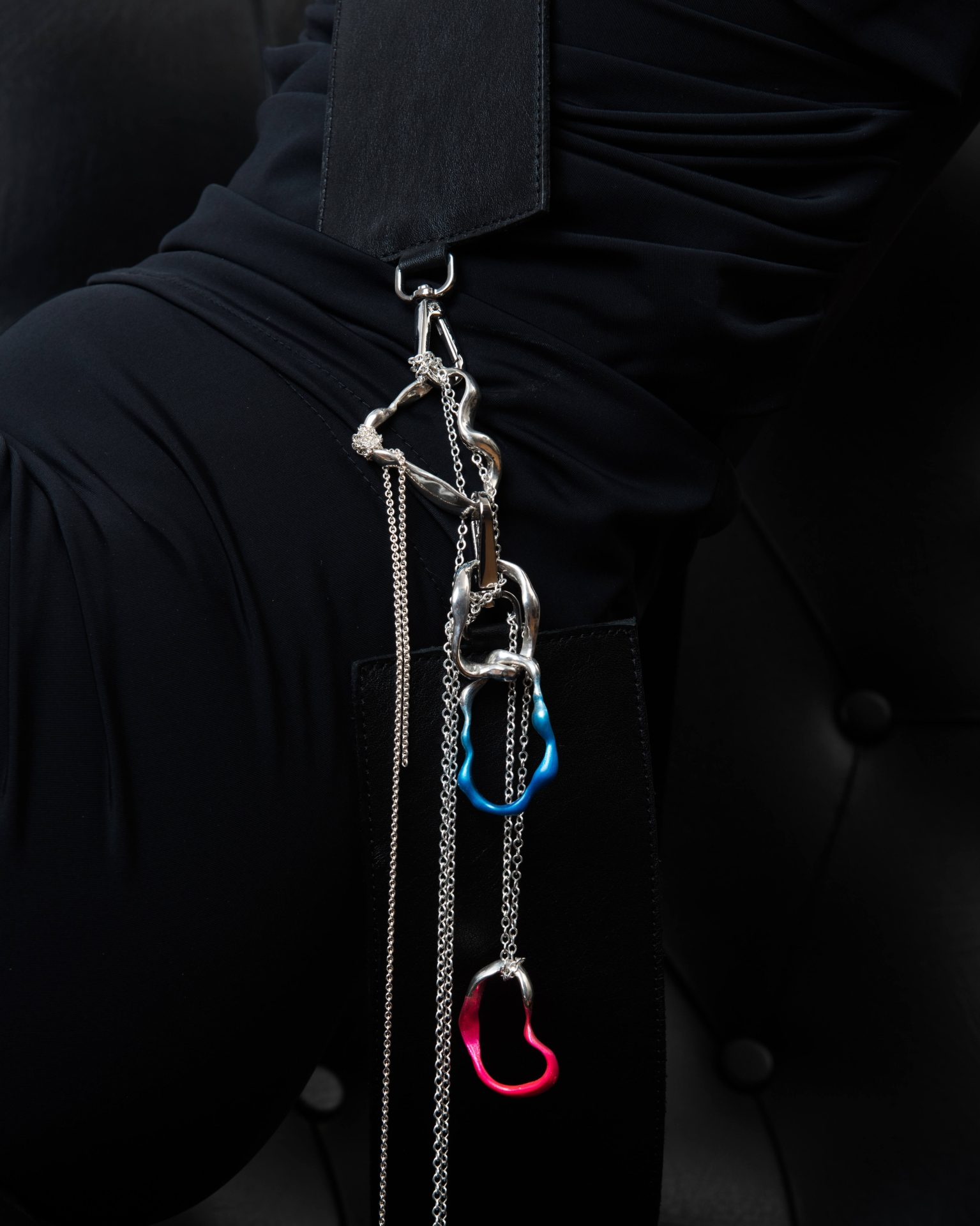1
Jewelry Designer of the Year
Magdalena Šťastníková




Both collections show a different style of Magdalena’s work – one work builds on personal themes while the other engages in a dialog with the work of another designer – yet both exhibit her consistent and personable approach. Drape was produced for a ready-to-wear women’s collection by Tomáš Němec, while Tender Tendrils follows the path of Magdalena’s creative work, developing on the themes of her graduate work, which she successfully defended at the K.O.V. studio of the Academy of Arts, Architecture and Design in Prague.
Both collections show a subtle sense for lightness and softness, which Magdalena is able to produce even when working with hard metal. She effectively communicates her ideas through the material itself, without needing to decide on any particular shapes. Her work is abstract while remaining sensitive and legible. In her hands, silver comes alive, like the drape fabric fluttering in the wind of a lady in a cabriolet car, or like the enmeshed roots and the thin, spiraling tendrils of plants.
Much like many contemporary designers who focus on soft shapes, Magdalena works with the ancient method of shaping silver in moulds of disappearing wax. Organic, viscous and irregular shapes have been returning to jewelry trends since at least 2020, and such shapes will certainly remain in vogue throughout 2025. Perhaps it’s partly the nostalgia for the organic minimalism of the 2000s, when designers were exploring certain aspects of ecological thought.
The Tender Tendrils collection also addresses the issue of humanity’s cohabitation with nature. But it is about more than ecology in the narrow sense of the word. This meditation on the encounter of the organic body with a plant provides insight into questions of self-care and the cultivation of relationships with those around us. It reminds us of our enmeshment and rootedness, as well as our capacity to grow through the help of others and achieve mutual thriving. The thin tendrils spreading out towards the unknown can become immensely resilient if they touch and receive support.
Magdalena’s stand-alone collections rather deal with profound ideas: the environment, temporality, interpersonal relations… But her collaboration with Tomáš Němec on Drape confronted her with a much lighter and seemingly banal task: to communicate through jewelry the luxury and vacation leisure enjoyed by rich women at the Italian riviera. The gold and precious gems we would normally expect are not among Magdalena’s favorite materials for jewelry-making. She thus brought her own vision of luxury in silver, which softly cascades and flows around the body like the fabric of an evening gown, or can just as easily flutter in the wind like the loose hair and satin scarf around the neck of a cabriolet driver.
While Magdalena’s previous designer collaborations rather focused on affective show pieces, the Drape collection offers consistent and easily wearable products. They are ready-to-wear, just like the fashion collection they are supposed to complete. And although they were made for a womenswear collection, their design is not explicitly gendered. They are uni-sex, as Magdalena’s work often is. And interestingly, they are also uni-age.
Veronika Ruppert
Karel Císař
Tereza Finková
Kristina Fišerová
Martina Freitagová
Petr Jansa
Helena Kardová
František Kast
Michaela Kádnerová
Helena Koenigsmarková
Jan Králíček
Tomáš Luňák
Jan Mergl
Barbora Müllerová
Michal Nanoru
Jana Patočková
Petra Roubalová
Veronika Ruppert
Eva Slunečková
Klára Tománková
Pavel Turek
Rostislav Vaněk
Eliška Vrbová
Milena Zuravljova
